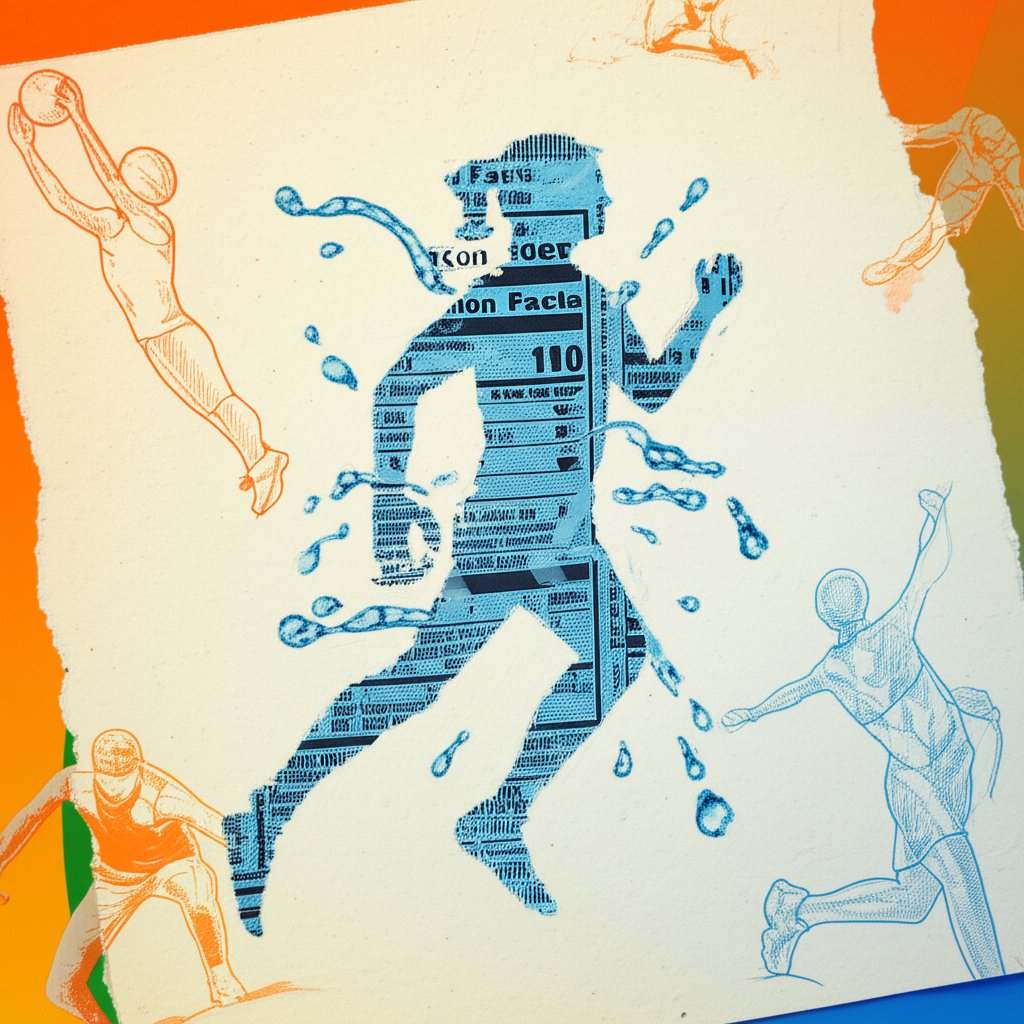Untuk gambaran yang lebih besar dan konteks penuh, pastikan Anda membaca panduan utama kami tentang Body Armor Nutrition Facts: Whats Really In This Sports Drink?.
markdown
Want to stay hydrated without all the sugar and extras found in many sports drinks? You’re likely comparing options, and understanding the nutrition facts for Propel Water is key to making the right choice. Many reach for Propel thinking it’s a zero-calorie, electrolyte-packed hydration solution, but let’s take a closer look and compare it to other options like BodyArmor.
At a glance:
- Discover the complete nutritional profile of Propel Water, including its electrolyte content and added vitamins.
- Compare Propel Water’s ingredients to BodyArmor and other sports drinks in terms of sugar, sodium, and artificial additives.
- Understand if Propel Water is the best choice for your specific hydration needs, considering factors like activity level and dietary restrictions.
- Learn when and how to best use Propel Water for optimal hydration and performance.
- Debunk common misconceptions about Propel Water’s health benefits.
Propel Water: Decoding the Label
Propel Water is marketed as a fitness water, aiming to provide more than just hydration. It distinguishes itself by offering added electrolytes and vitamins without the calories of traditional sports drinks. But what exactly does that translate to on the nutrition label?
A typical 20-ounce bottle of Propel Water (flavored) contains:
- Calories: 0
- Total Fat: 0g
- Sodium: 150-270mg (depending on the flavor)
- Total Carbohydrate: 0g
- Total Sugars: 0g
- Protein: 0g
- Potassium: 50-75mg (depending on the flavor)
- Vitamin E: 4.5mg (30% DV)
- Vitamin B3 (Niacin): 1.6mg (10% DV)
- Vitamin B5 (Pantothenic Acid): 0.5mg (10% DV)
- Vitamin B6: 0.2mg (10% DV)
The key ingredients include water, citric acid, sodium citrate, salt, potassium phosphate, sucralose, acesulfame potassium, and added vitamins. Notice the absence of sugar.
Propel vs. BodyArmor: A Head-to-Head on Hydration
When choosing a sports drink, it’s crucial to compare options. Here’s how Propel Water stacks up against BodyArmor:
| Feature | Propel Water | BodyArmor (Original) | BodyArmor Lyte |
|---|---|---|---|
| Calories | 0 | 120-140 (per 16 oz) | 15 (per 16 oz) |
| Sugar | 0g | 29g (per 16 oz, from cane sugar & concentrate) | 0g (added sugars), 15g total (per 20oz from stevia and sugar) |
| Sodium | 150-270mg | 15-30mg (per 16 oz) | Varies, generally low |
| Potassium | 50-75mg | 600-680mg (per 16 oz) | Similar to original BodyArmor |
| Sweeteners | Sucralose, Acesulfame Potassium | Cane Sugar, Fruit Concentrates | Stevia and Erythritol Sugar Alcohol |
| Artificial Dyes | No | No | No |
| Vitamins | E, B3, B5, B6 | A, C, E, B3, B5, B6, B9, B12, Zinc, Magnesium | A, C, E, B3, B5, B6, B9, B12, Zinc, Magnesium |
| Primary Use | Light Hydration, Electrolyte Replenishment | Intense Hydration, Electrolyte Replenishment, Energy | Lower calorie Hydration, Electrolyte Replenishment |
| Example: Imagine you’re doing a light workout. Propel might be sufficient for basic hydration. However, for a long run, BodyArmor’s original formula, with its higher electrolyte and sugar content, might be more beneficial. If you are watching calories, BodyArmor Lyte might be a better choice. |
Understanding Sweeteners: The Propel Approach
Propel Water uses artificial sweeteners like sucralose and acesulfame potassium to achieve its sweet taste without adding calories. While deemed safe by regulatory bodies, some people prefer to avoid these sweeteners due to potential long-term health concerns or digestive sensitivities.
Consider this: If you experience bloating or discomfort after consuming products with artificial sweeteners, Propel might not be the best choice for you. Experiment with other options like BodyArmor Lyte which uses stevia.
Sodium Levels: Are They Enough?
Propel contains more sodium than the original BodyArmor – a factor to consider based on your activity level.
A caveat: For athletes engaged in prolonged, heavy sweating, Propel’s sodium content might not be sufficient to replace what’s lost. In those cases, additional sodium supplementation might be necessary. Check out the pillar article, Fueling Up: Sports Drink Truth, for a deeper dive into the role of sodium in sports drinks and how to determine your individual needs.
When Propel Shines (and When It Doesn’t)
Propel Water can be a good choice in specific scenarios:
- Light workouts: Ideal for replacing fluids and electrolytes lost during less intense activity.
- Daily hydration: A flavorful alternative to plain water, especially for those who struggle to drink enough water.
- Calorie-conscious individuals: A zero-calorie option for those watching their weight.
However, it might not be the best choice for: - Intense, prolonged exercise: The low electrolyte and zero-sugar content may not adequately replenish what’s lost during strenuous activity.
- Individuals sensitive to artificial sweeteners: Other options like BodyArmor which use cane sugar or stevia might be more suitable.
- Those needing significant sodium replacement: Athletes who sweat heavily may need a drink with higher sodium content.
Practical Playbook: Maximizing Propel’s Benefits
Here’s how to incorporate Propel Water into your hydration strategy:
- Assess your activity level: Is it a light jog or a marathon? Choose your drink accordingly.
- Consider your dietary needs: Are you sensitive to artificial sweeteners? Do you need to replenish significant sodium?
- Hydrate proactively: Don’t wait until you’re thirsty. Sip on Propel Water throughout the day, especially before, during, and after exercise.
- Listen to your body: Pay attention to how you feel after drinking Propel. If you experience any discomfort, switch to another option.
Quick Answers: Common Questions About Propel
- Is Propel Water healthy?
Propel Water can be a decent option for basic hydration and electrolyte replenishment, but it’s not necessarily a “health” drink. It lacks the nutrients and benefits of whole foods. - Does Propel Water have sugar?
No, Propel Water is sugar-free. It uses artificial sweeteners like sucralose and acesulfame potassium. - Is Propel Water better than Gatorade?
It depends. Propel has fewer calories and no sugar, but Gatorade has more electrolytes and carbohydrates, which can be beneficial during intense exercise. - Can I drink Propel Water every day?
In moderation, yes. However, relying solely on artificially sweetened drinks isn’t ideal. Prioritize plain water and whole foods. - Is Propel Water good for weight loss?
As a zero-calorie beverage, it can be a part of a weight-loss plan by replacing sugary drinks. However, it’s not a magic bullet.
Actionable Close: Your Hydration Decision
Making the right choice about your sports drink is crucial for performance and health. By understanding the nutrition facts for Propel Water and comparing it to options like BodyArmor, you can tailor your hydration strategy to meet your specific needs. Consider your activity levels, dietary preferences, and individual sensitivities to make an informed decision. Choose wisely and stay hydrated!

- Weight Loss for Men Builds Habits for Lasting Success - October 27, 2025
- How To Lose 50 Pounds In 6 Months The Right Way - October 26, 2025
- Lose 50 Pounds in Six Months Healthily and Realistically - October 25, 2025










